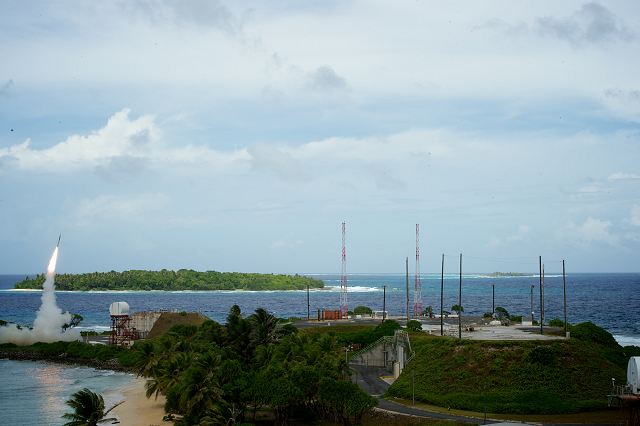These
systems worked together to detect, track, engage and negate two ballistic
missile targets and one cruise missile-like target during a complex, live-fire
flight test conducted by the Missile Defense Agency (MDA) at the Reagan
Test Site on the Kwajalein Atoll in the South Pacific.
Known as Flight Test Integrated-01, these different sensors and weapons
systems were integrated through the Command and Control, Battle Management,
and Communications (C2BMC) system, also developed by Lockheed Martin.
The C2BMC is the integrating element for the Ballistic Missile Defense
System and links the various sensors and weapon systems.
"Today's success demonstrates the strides that have been made in
missile defense technologies and the maturity and reliability of these
systems," said Dennis Cavin, Vice President for Army and Missile
Programs at Lockheed Martin. "This test demonstrates the benefits
of a layered, interoperable approach that can help protect the U.S. and
allies from increasing security concerns around the world."
The flight test began with an Extended Long Range Air Launch Target (E-LRALT)
missile airdropped over the broad ocean area north of Wake Island from
a U.S. Air Force C-17 aircraft, staged from Joint Base Pearl Harbor-Hickam,
Hawaii. The AN/TPY-2 X-band radar, located with the THAAD
system on Meck Island, tracked the E-LRALT and a THAAD
interceptor successfully intercepted the Medium-Range Ballistic Missile.
THAAD was operated by Soldiers from the 32nd AAMDC.
Another short-range ballistic missile was launched from a mobile launch
platform located in the broad ocean area northeast of Kwajalein Atoll.
The PATRIOT system, manned by soldiers of the 94th AAMDC, detected, tracked
and successfully intercepted the target with a PAC-3 interceptor. Additionally,
a second PAC-3 interceptor also intercepted a low flying cruise missile
target over water.
The USS FITZGERALD (DDG 62) successfully engaged a low flying cruise missile
over water. The Aegis system also tracked and launched an SM-3 Block 1A
interceptor against a Short-Range Ballistic Missile (SRBM). However, despite
indication of a nominal flight of the SM-3 Block 1A interceptor, there
was no indication of an intercept of the SRBM.
FTI-01 was a combined developmental and operational test. Soldiers, Sailors,
and Airmen from multiple Combatant Commands operated the systems and were
provided a unique opportunity to refine operational doctrine and tactics.
Program officials continue to assess and evaluate system performance based
upon telemetry and other data obtained during the test.
|




















